Conclusions
KEY POLICY OPPORTUNITIES
Energy efficiency is a diverse, ubiquitous, and versatile tool that often presents a clear and cost-effective investment decision. However, its diversity often leads to challenges in its implementation, and today’s energy efficiency investments – while significant – still fall well below their potential.
Consistent, well-designed policies are critical to ensure that markets drive energy efficiency forward across all sectors. Currently, we are reaping the benefits of decades of commitment to energy efficiency; however, accelerating energy efficiency requires a proactive and evolving strategy.
Primary Energy Efficiency Policies, 1970-2022
The U.S. policymaker has an extensive toolkit to promote energy efficiency across national, state, and local levels. Like the distributed nature of energy efficiency, there is also not one “single bullet” policy to incentivize it; instead, the “silver buckshot” method has proven highly effective. This diverse toolkit includes opportunities such as:
|
Options for Action
|
|
| Market-Based Mechanisms |
Consider cost-effectiveness of assets through lifecycle assessments, including operation and maintenance, as well as the non-energy benefits Develop and improve financing tools for energy efficiency, including PACE and ESPCs Strengthen the accountability and market value of energy efficiency by strengthening existing voluntary market certification tools and labeling (e.g., ENERGY STAR, LEED) and industry-wide energy efficiency voluntary agreements Establish market incentives for energy efficiency (e.g., tax incentives, rebate programs, or broader tools such as carbon pricing) |
| Set Policy Prioritizing Efficiency |
Recognize and consider the benefits of energy efficiency beyond energy savings, including benefits to the broader economy, job growth, U.S. international competitiveness, public health, lower energy burdens, and climate and particulate emissions impacts Establish clear top-line prioritization of energy efficiency through energy efficiency strategies and planning Advance equitable outcomes by targeting energy efficiency to low- and moderate-income households and other underserved communities Support utility energy efficiency programs and concrete targets for energy efficiency, such as EERS |
| Regulatory Levers |
Continually strengthen energy-efficient building codes and appliance/equipment standards (e.g., refrigeration, air conditioning, lighting), one of the most cost-effective ways to ensure cost-effective energy efficiency is built-in from the beginning Continually strengthen transportation fuel economy standards to drive innovation and energy efficiency gains in key sectors (examples: CAFE standards, marine and aviation fuel economy standards) Establish policies to correct market disincentives to energy efficiency, such as decoupling, LRAM |
| Technology & Data Enablers |
Invest in rigorous research, development, and demonstration, to maintain a competitive pipeline of innovation Develop and maintain up-to-date and accurate public data, statistics, and analysis to enable effective tracking of energy efficiency trends and effectiveness Support market development of energy efficiency enablers such as AMI and other grid modernization technologies |
| Support System Approaches |
Explore system-wide and time-dependent opportunities to enhance efficiency, leveraging fast-moving combinations of IoT, connectivity, and IT innovations to identify and pursue new levels of energy savings Explore opportunities to invest in energy efficiency and demand response as utility system resources, supported by decoupling and shareholder incentives Consider options to stimulate behaviors that support greater sector-wide energy-efficiency, such as programs and smart technologies to encourage demand response participation, and by increasing occupancy levels in transportation vehicles |
Where We Go From Here
It is clear from the 59 indicators described above that energy efficiency has made its mark on the U.S. energy economy. It has had transformational impact in large part due to its pragmatism, cost-effectiveness, bipartisan support, and the ability to leverage small and beneficial advances over an immense scale.
Energy productivity has more than doubled since 1970, and industrial carbon intensity in particular has declined 70% since 1980. Energy efficiency investments have reduced today’s energy expenditures by approximately $800 billion, and federal funding for energy efficiency programs has increased by 61% in the last decade, with North American energy efficiency investments still growing, with a projected 15% increase from 2015 to 2022.
But it has also done much more: created millions of jobs, reduced climate emissions, enhanced public health, improved comfort, and commercial productivity, and it continues to address the inequality in the financial burden of energy costs.
Energy efficiency programs have repeatedly shown to be highly cost-effective, marking energy efficiency as one of the most affordable resources for utilities. The policy environment is critical; from EERS and decoupling to federal, state, and local standards, each of these tools has been a critical enabler of energy efficiency deployment.
These investments are paying off, though there is still tremendous room to grow. The numbers of new residential and commercial zero-energy buildings are still a small fraction of the building stock in the United States. Only three states have adopted IECC’s most recent residential energy code, with 10 states using the 2018 codes, and eight states having no state-wide energy codes at all. Meanwhile, we continue to see inequitable outcomes for low- and moderate- income, Black, and Indigenous households. In the U.S., roughly 34 million households had difficulty meeting their energy needs, and just over 30 million households had high energy burdens. Energy burdens for Black and Native American households are nearly double, and Hispanic households about 20% higher than, White non-Hispanic households. Internationally, the United States ranks 10th on ACEEE’s international energy efficiency scorecard.
However, to move forward as a nation, strong and consistent support for the continued growth of energy efficiency is critical. We must raise our ambitions to support energy efficiency – advancing on tried-and-true policies that unlock private capital, drive innovation, and ensure energy efficiency is accessible for all.
But it also requires that we prepare for energy efficiency’s future.
With the deployment and development of connected devices that allow for greater integration and automation of energy efficiency, new efficiency gains at higher levels of complexity are becoming increasingly possible; perhaps inevitable. But to take advantage of these evolving opportunities and align them to provide the U.S. with maximum benefit, we must consider energy efficiency as the foundation of our path forward and leverage its massive scale and versatility to prepare for tomorrow’s challenges.

